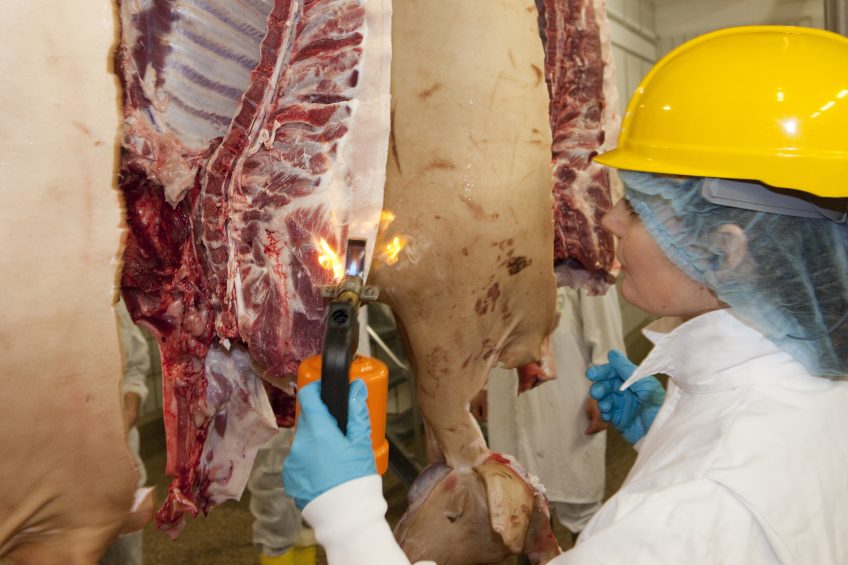4 Take-home messages on boar taint

Boar taint remains a difficult concept to grasp scientifically. So much became known in a recent German PhD-study. Which are the 4 take-home messages?
Dr Johanna Trautmann, University of Göttingen in Germany, divided her thesis Sensory Quality Control of Boar Taint up into 4 sections. Most revolve around the key question how to streamline and improve the establishing of boar taint at the slaughterline.
Boar taint is an important issue for the international swine business, as increasingly for welfare and economic reasons, there is a demand for finishing boars instead of barrows. When slaughtering boars, it is vital that no tainted carcass makes it to supermarkets. It is, however, not easy finding a better alternative for detecting boar taint than the human nose.
No chemical nose yet
Trying to establish boar taint by a chemical analysis is easier said than done. In a summary, Trautmann discussed that “the discrepancy between chemical and sensory analysis in all studies indicates that a simple comparison of chemical analysis and the complex human sensory perception is insufficient.”
The main results of this thesis were presented in 4 publications, which each had 4 take-home messages. They are summarised below.

Boar taint assessors need careful selection
The primary objective of paper I was to develop smell tests in order to objectively characterise the selection process of assessors for boar taint evaluation. Odour detection thresholds for androstenone and skatole as well as the assessors’ ability to discriminate and identify both substances at various levels through easy-to-use paper smell strips were analysed.
Subsequently, 25 fat samples in threefold repetition were evaluated to assess the effect of olfactory performance on the sensory quality control task. Considerable inter-individual as well as intra-individual variability was revealed for the assessors’ olfactory acuity towards both androstenone and skatole. The assessors’ olfactory performance significantly affects the probability of rating a fat sample as boar tainted.

Hot-iron is best for boar taint detection
The primary objective of paper II was to fill the gap on sample preparation for boar taint evaluation in previous studies. In this paper, 3 commonly used protocols to heat fat samples for boar taint detection, i.e., the microwave, the hot-iron and the hot-water method were compared.
A sensory panel consisting of 10 assessors was used. The comparison was carried out on 72 boar fat samples that were also characterised chemically. The heating method significantly affected the probability of a deviant rating. Compared to an assumed ‘gold standard’ (chemical analysis), the performance was best for HI when both sensitivity and specificity were considered. Furthermore, the results show the superiority of the panel average result compared to the results of individual assessors. However, the consistency of the individual sensory ratings did not differ significantly between the 3 protocols. The 3 protocols showed only fair to moderate agreement.

Constant noise does not influence olfactory perception
The primary objective of paper III was to question the widespread recommendation that sensory tests should be carried out in an environment without extraneous noise. Apparently this becomes relevant when implementing sensory evaluation in the slaughter environment because the validity of results is questioned.
In this study, 2 groups of panelists were selected: the university panel usually working under silent conditions and an abattoir panel usually working at the slaughter line with abattoir noise. Odour discrimination, odour identification and odour detection thresholds were studied. Furthermore, a sensory quality control task using 40 boar samples was performed. All tests were accomplished both with and without extraneous noise recorded at an abattoir (70 dB) using headphones. Abattoir noise hardly affected the olfactory tests. As for the sensory quality control task: abattoir noise did not influence the perceived intensity of boar taint and the classification results of the testers.

Androstenone and skatole interact to change perception
The primary objective of paper IV was an in-depth analysis of odour-odour interactions of androstenone and skatole. Therefore, fat samples were collected from 1,043 entire male pig carcasses for sensory evaluation and quantification of boar taint compounds using gas chromatography mass spectrometry. Each sample was evaluated by 10 trained assessors resulting in 11,000+ individual ratings which were subjected to statistical analysis. In several trials the perception of skatole often appeared stronger than androstenone.
The agreement of the boar taint classification based on chemical analysis was studied with the newly developed so-called curved approach, which lead to a panel sensitivity of 86% with a specificity of 70%. Inter-individual differences in assessors’ responses to androstenone and skatole were confirmed. Intra-class correlation coefficients were calculated to document the reliability of the sensory ratings. When considering the average rating of a panel consisting of 10 assessors, the corresponding intra-class correlation of 2 such ratings on the same target (ICC3k) is 72. This highlights the inter-individual variation of odour perception by trained assessors, which implies that for sensory quality control a group of assessors is to be preferred over single assessors.
The studies presented were conducted within the framework of the STRATEGER project (September 2012-July 2016).











